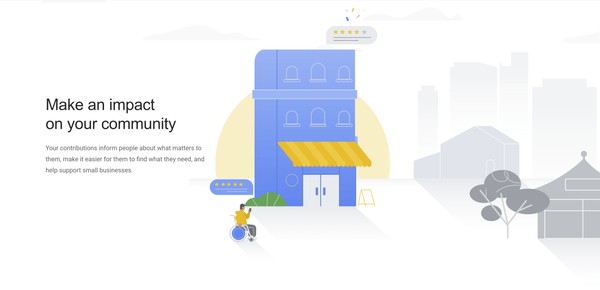The Google Local Guides program encourages users to contribute to Google Maps by sharing reviews, photos, and knowledge about local businesses and places. Anyone with a Google account can become a Local Guide, offering insights and helping others navigate their local area. However, this system isn’t without its potential drawbacks. Let’s delve into what it means to be a Local Guide and the implications for businesses.
Understanding Google Local Guides
The Local Guides program is a global community where members share their experiences, providing reviews, photos, and updating information on Google Maps. This collective effort helps maintain the accuracy and relevance of Google’s map data and business listings.
With over a billion people relying on Google Maps every month to find businesses and navigate, keeping the information current is a massive undertaking. Google uses various sources, including street view cars, satellite imagery, and user contributions. Local Guides contribute a significant portion, adding around 20 million pieces of information daily.
Becoming a Local Guide is a simple process.
Joining the Google Local Guides Program
Signing up is easy. Just visit the Google Maps Local Guides website, register, and start contributing by leaving reviews and posting photos of places you’ve visited. The more you engage, the higher your ranking as a guide becomes.
Share your favorite dish from a local restaurant, a hidden gem, or the best sunset viewing spot. Becoming a Local Guide allows you to share your knowledge and potentially promote your social media presence.
Perks and Benefits of Being a Local Guide
The Local Guides program is designed for individuals who enjoy sharing their local insights and travel experiences with others.
Contributing reviews and photos of local businesses offers valuable information for potential customers and increases online visibility for those businesses. As a Local Guide, you earn points, badges, and other perks.
Reaching level four unlocks your first Local Guides badge, making your contributions more visible.
Google rewards active guides with early access to new features, special perks, and exclusive partner rewards. Some guides may even be featured in promotional videos or invited to attend summits.
Earning Points and Badges in the Google Local Guides Program
Consumers often trust reviews from other users more than advertising. Whether it’s finding a reliable service, a great restaurant, or a unique place to explore, people often rely on the experiences and opinions of others.
Participation in the Local Guides program is incentivized with points, badges, and other rewards. These guides contribute to the Google Maps ecosystem by providing up-to-date information.
The Google Local Guides program employs a real-time gamification system. The more you contribute, the more points and rewards you accumulate.
These points and badges can be exchanged with Google partners. To earn points, contribute to Google Maps. To earn badges, stay active.
Contributions, Points, and Badges
Local Guides can answer questions, edit place information, and review local businesses. You can provide answers in the information panel during a local search, write a review, add a missing place, update details, and verify facts.
Each contribution earns you a specific number of points. For example, uploading a photo earns five points, while writing a review with over 200 characters earns 10 points plus a 10-point bonus. Accumulating points quickly leads to earning badges.
You need 250 points to get your first badge. Level ten, the highest tier, requires 100,000 points!
Businesses are recognizing the importance of customer reviews. User-generated content, including product ratings, images, videos, and Q&A, significantly influences purchasing decisions.
The Potential Downsides: Gamification and Review Integrity
While the intention behind Google Maps and Local Guides is positive, some participants are more interested in collecting badges and rewards than providing genuine insights.
Gamification applies game mechanics to non-gaming contexts, making tasks more engaging and rewarding. Google Maps and Local Guides use gamification techniques to increase user engagement. However, this can lead to users focusing on earning points and badges rather than benefiting the community authentically.
The more points you earn, the higher your Local Guide level becomes, increasing your perceived trustworthiness. This can incentivize some users to leave low-effort reviews, fake photos, or negative reviews just to gain points. While badges are not publicly visible, the Local Guide’s level is, influencing trust.
Poor implementation has diminished the program’s value by reducing the integrity of contributions. The Google Q&A section sometimes contains short, unhelpful, and even sarcastic answers solely aimed at earning points.
Are Local Guides Trustworthy? How to Determine
Unfortunately, not all Local Guides participate with the right intentions. Although most guides contribute genuinely, some businesses receive fake or low-quality reviews that can harm their reputation.
Why do they do this?
Earning points, unlocking badges, and gaining influence can be addictive, sometimes more so than writing honest, helpful reviews.
Users searching for local businesses may trust recommendations from Local Guides more than other reviews. However, some badge holder reviews can be unrealistic.
The Local Guides program was designed to ensure that Google Maps provides accurate and valuable information. However, there is an increasing number of unnecessary and harmful reviews left by individuals seeking to obtain a Local Guide badge.
Should you trust them? Check their profile to see if you recognize them. Look for signs of fake accounts or attempts to game the system.
Protecting Your Business from Negative Reviews
Is your business vulnerable to malicious Local Guides or competitors? While removing fake reviews can be challenging, it is possible.
The best strategy is to proactively encourage genuine reviews from your customers.
Using tools, businesses can actively encourage customers to leave reviews on Google My Business or other review sites, helping build trust and drown out fake or negative reviews.
Conclusion
The Google Local Guides program is a valuable resource for those seeking local recommendations and information. However, the gamified nature of the program can sometimes lead to compromised review integrity. As a consumer, it’s essential to critically evaluate reviews, even those from Local Guides. As a business owner, actively managing your online reputation and encouraging genuine customer feedback is crucial.
